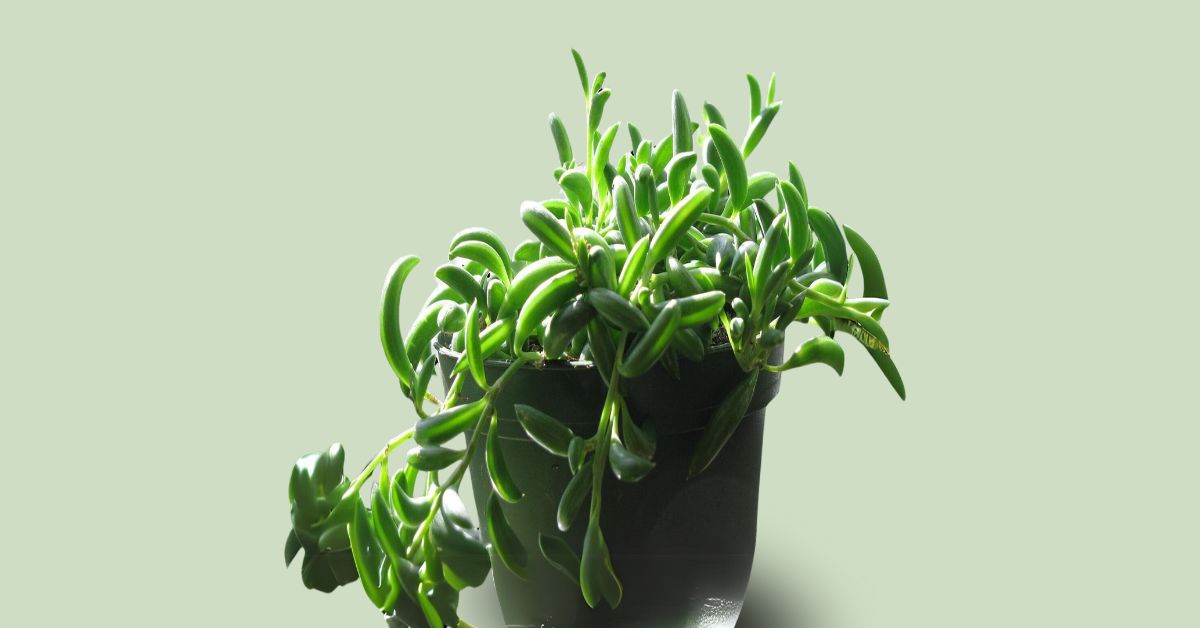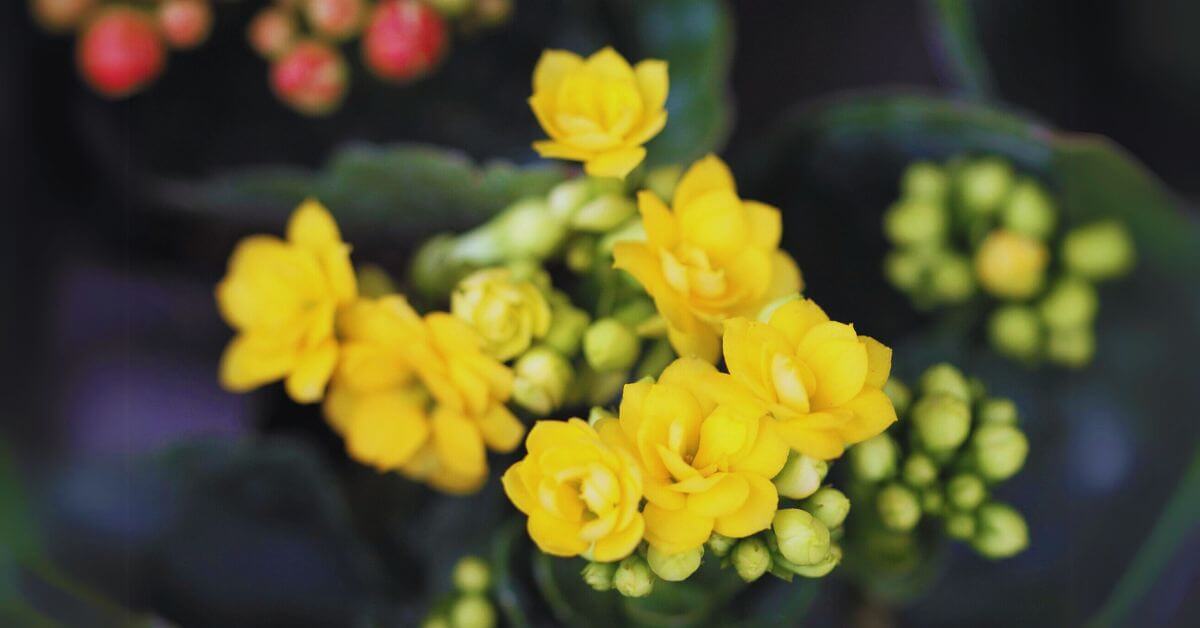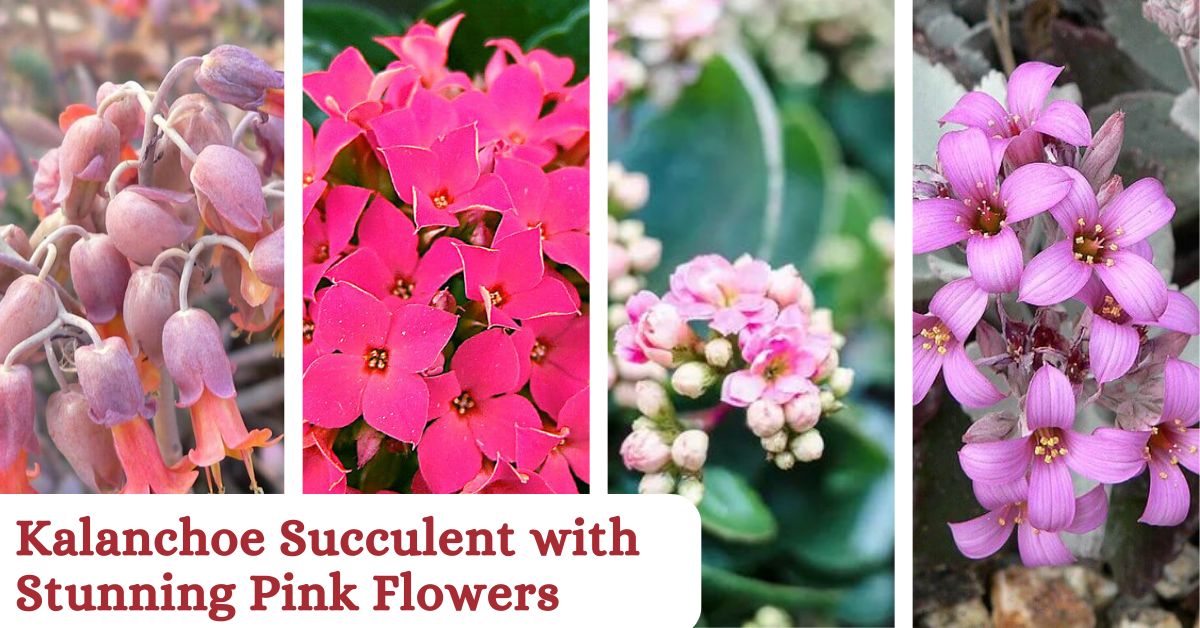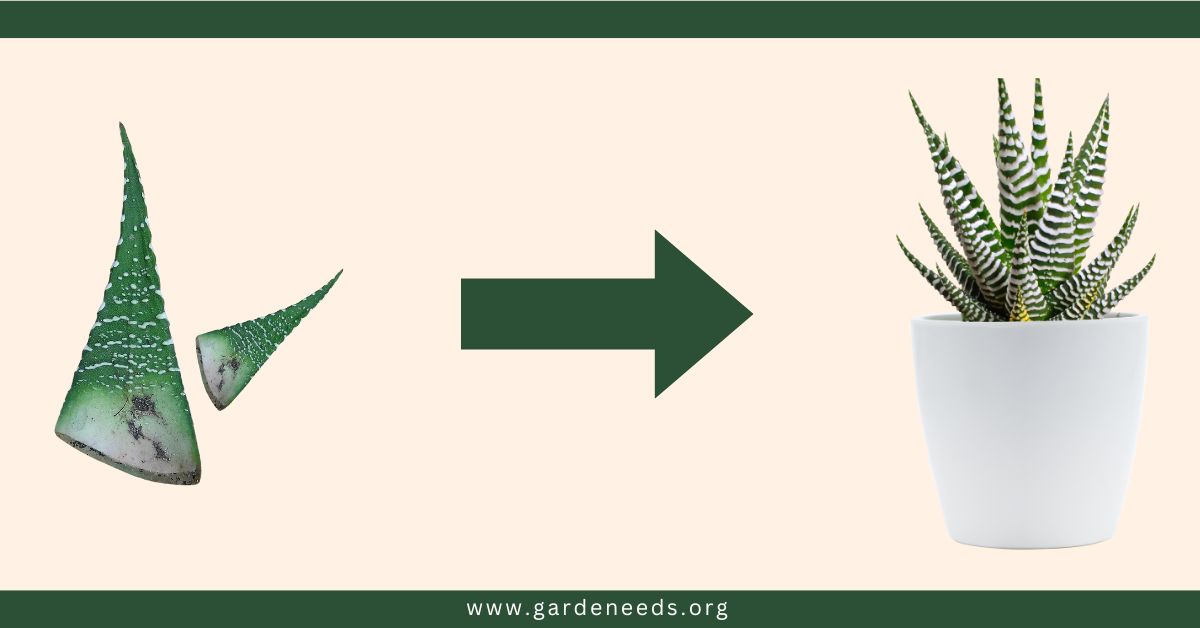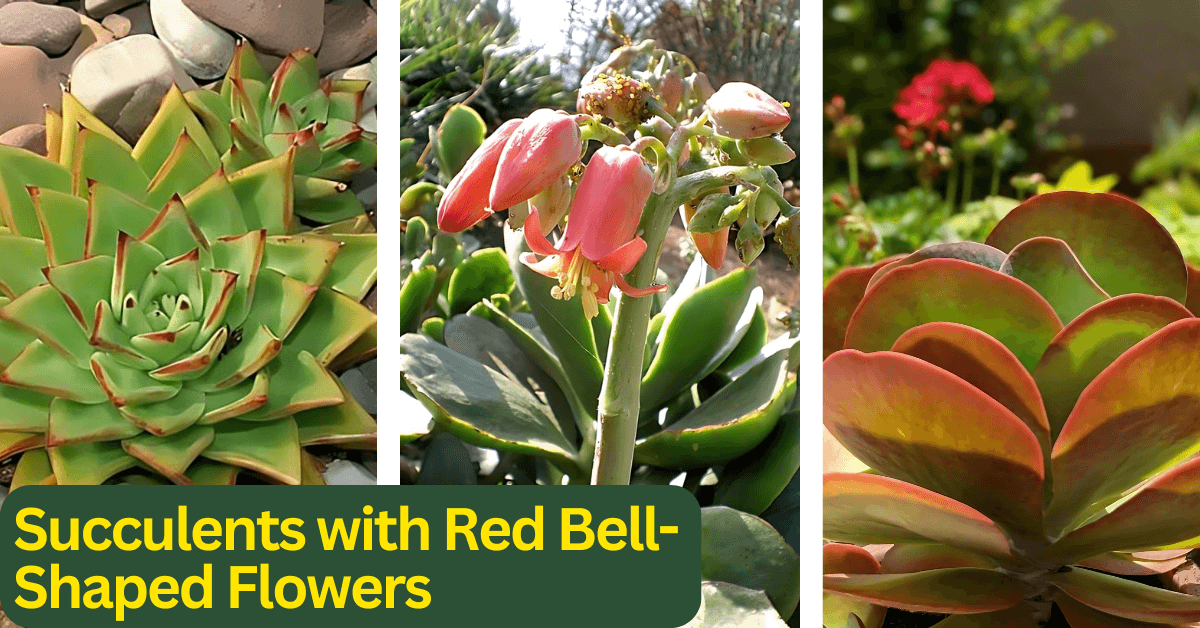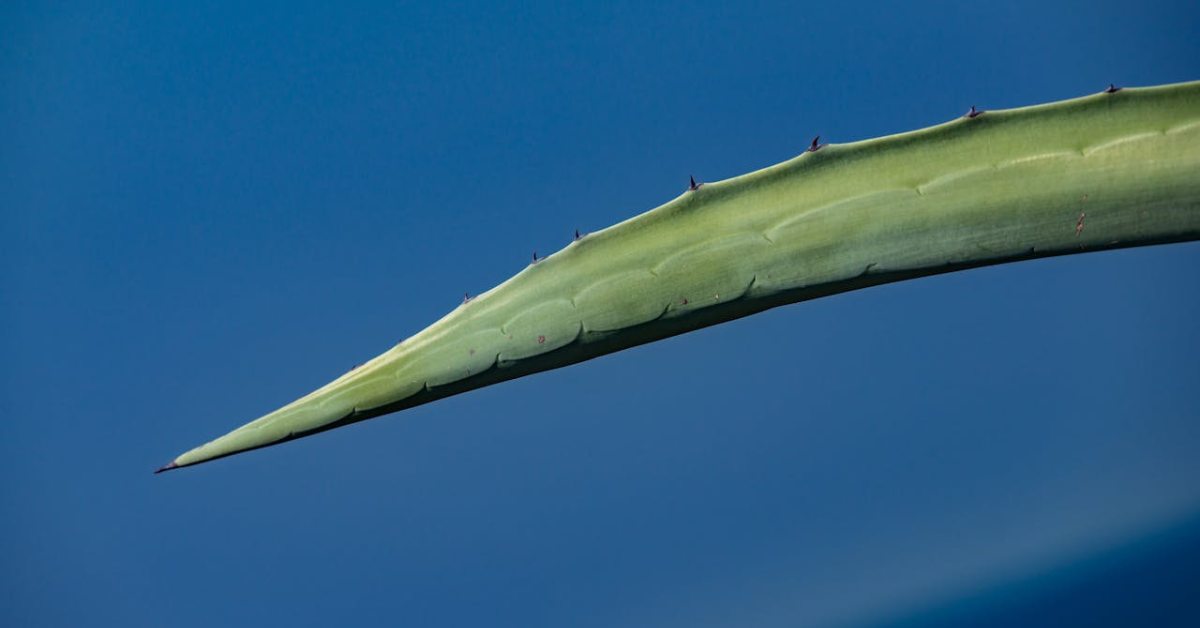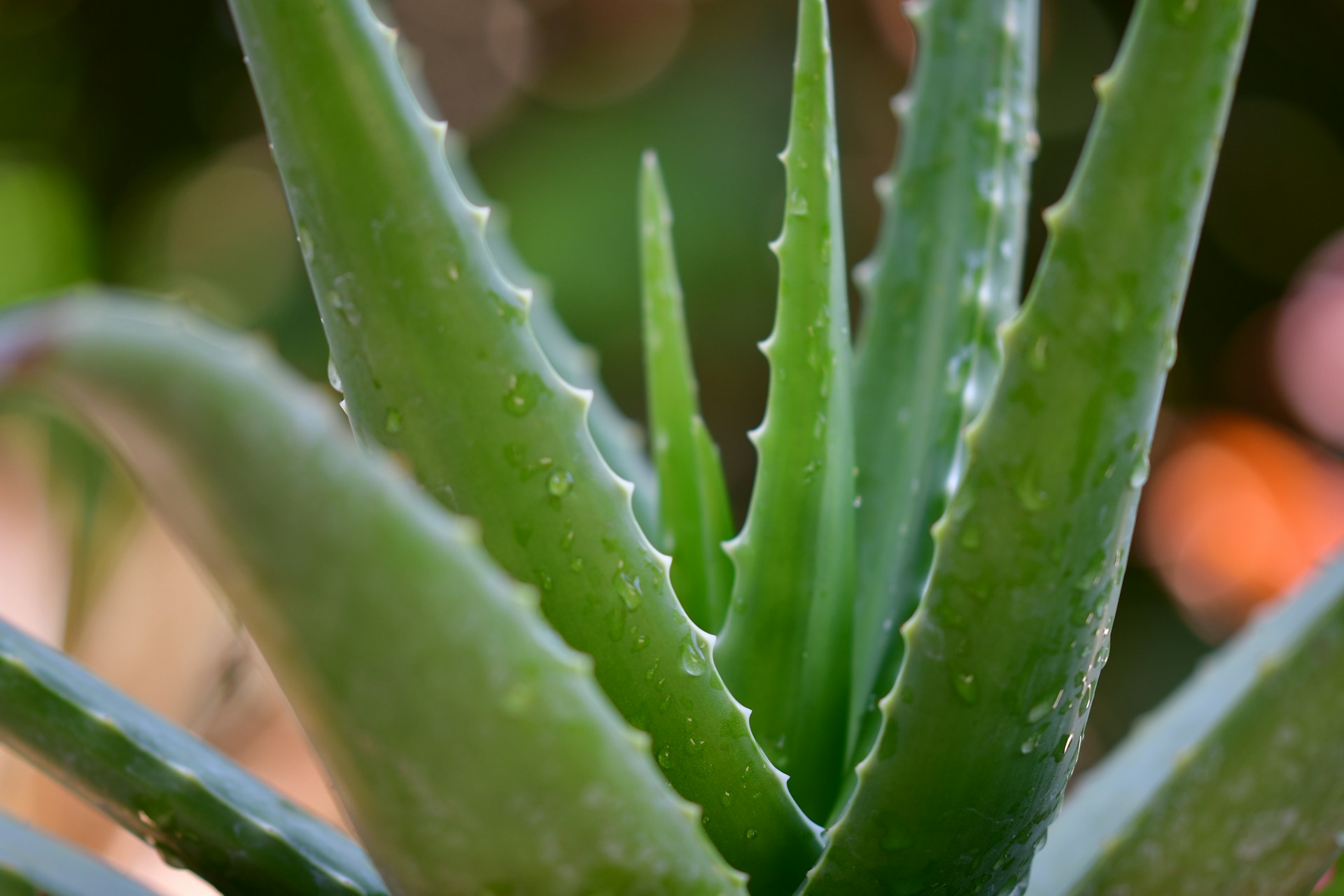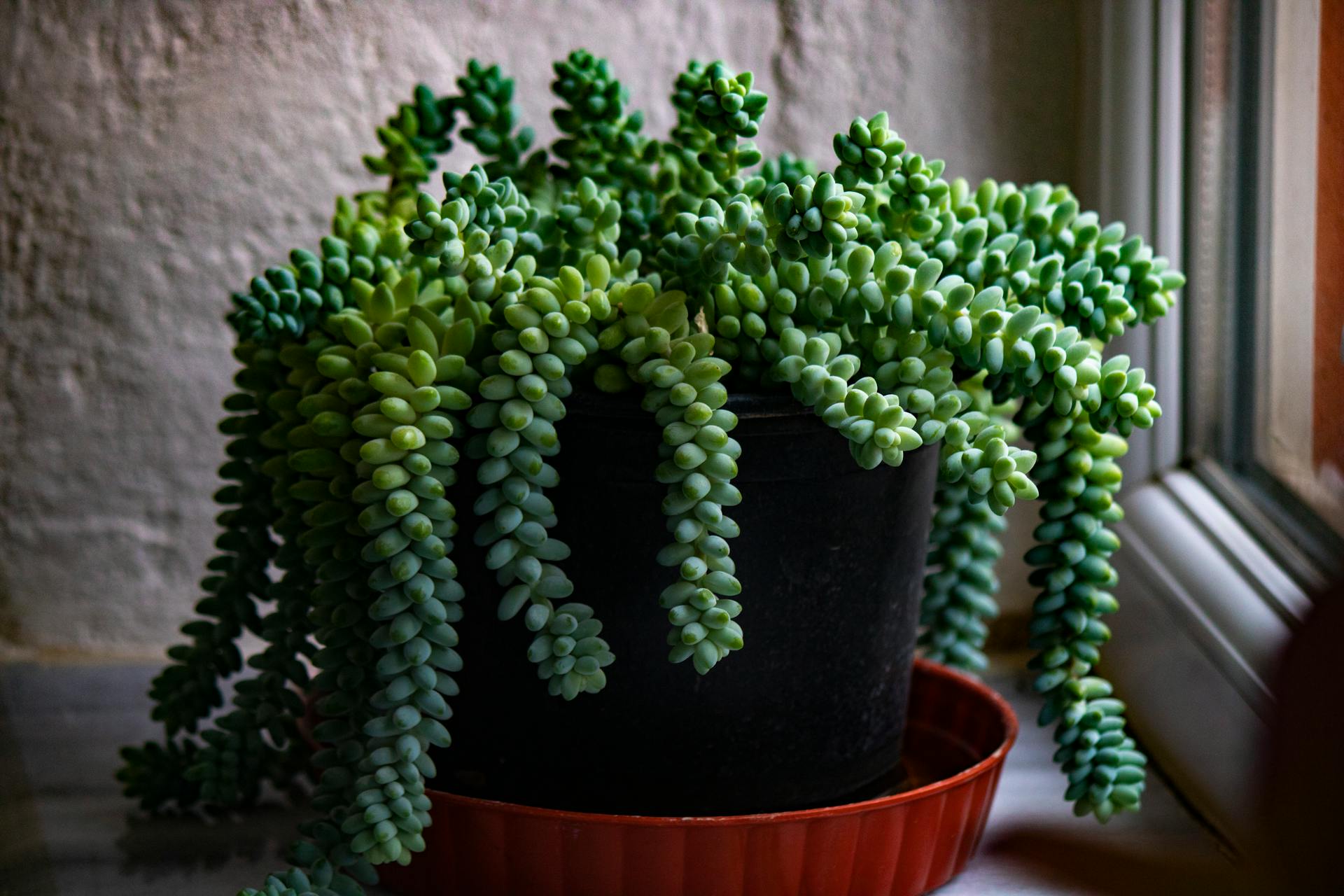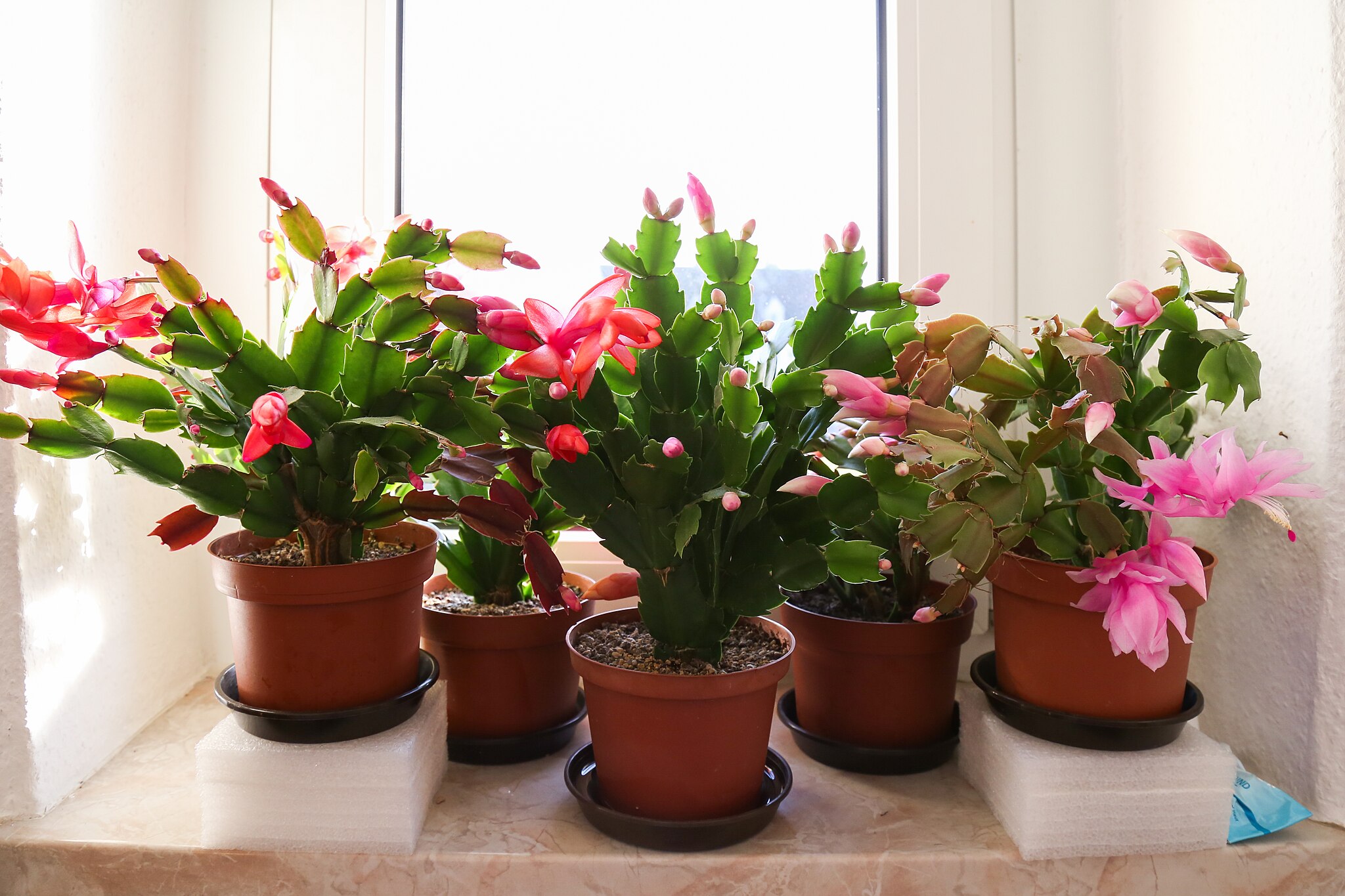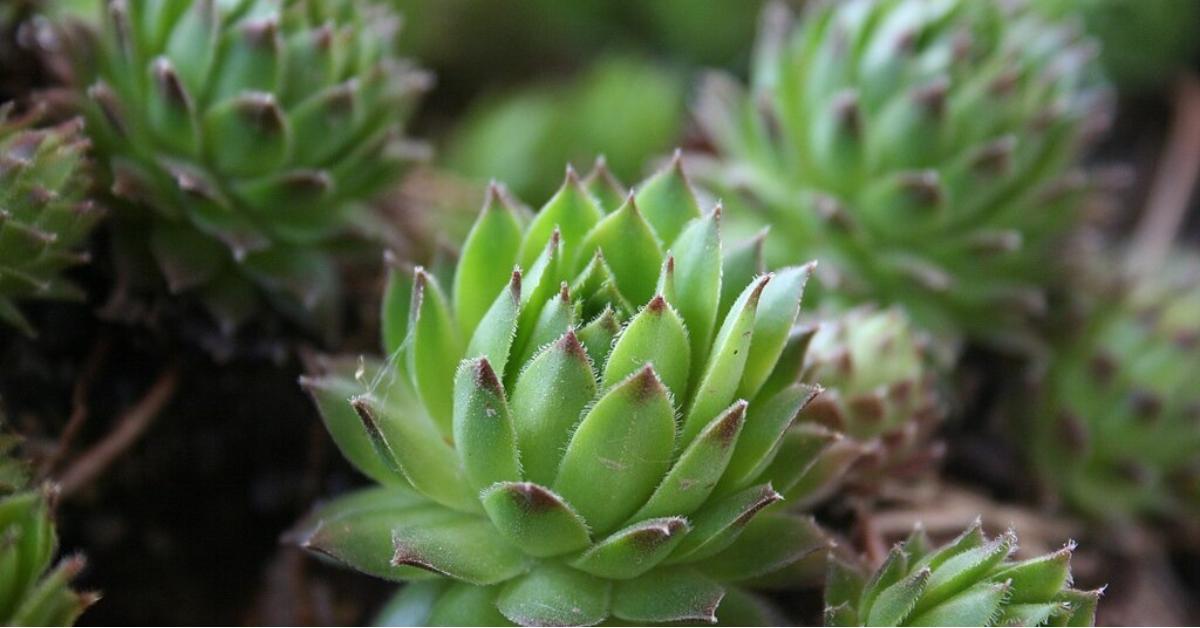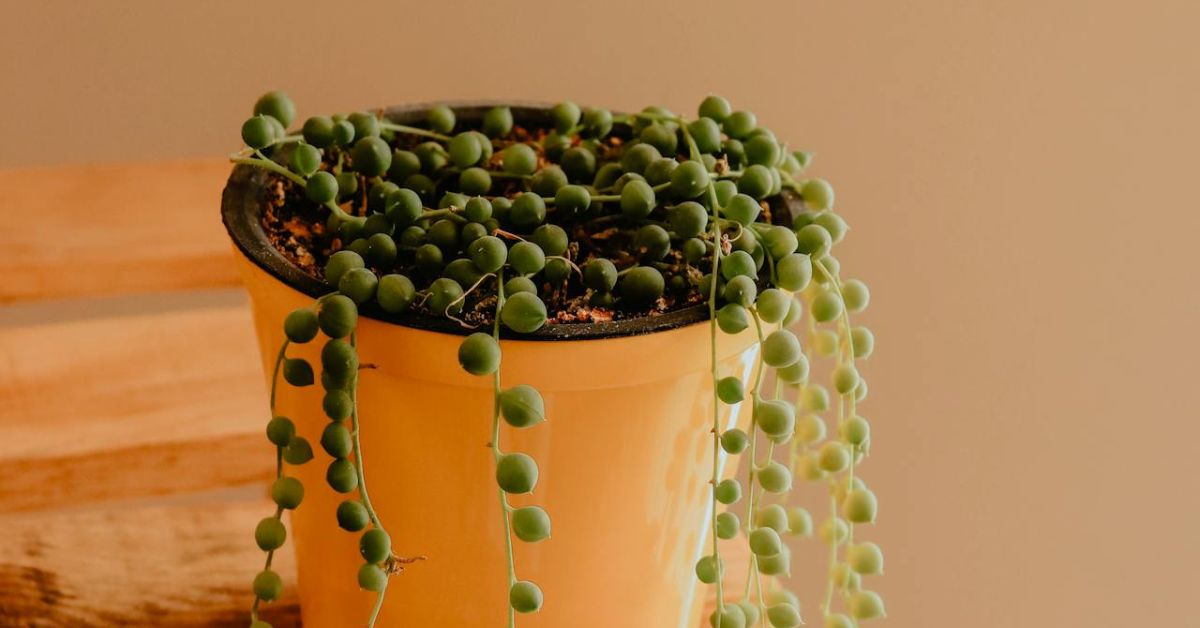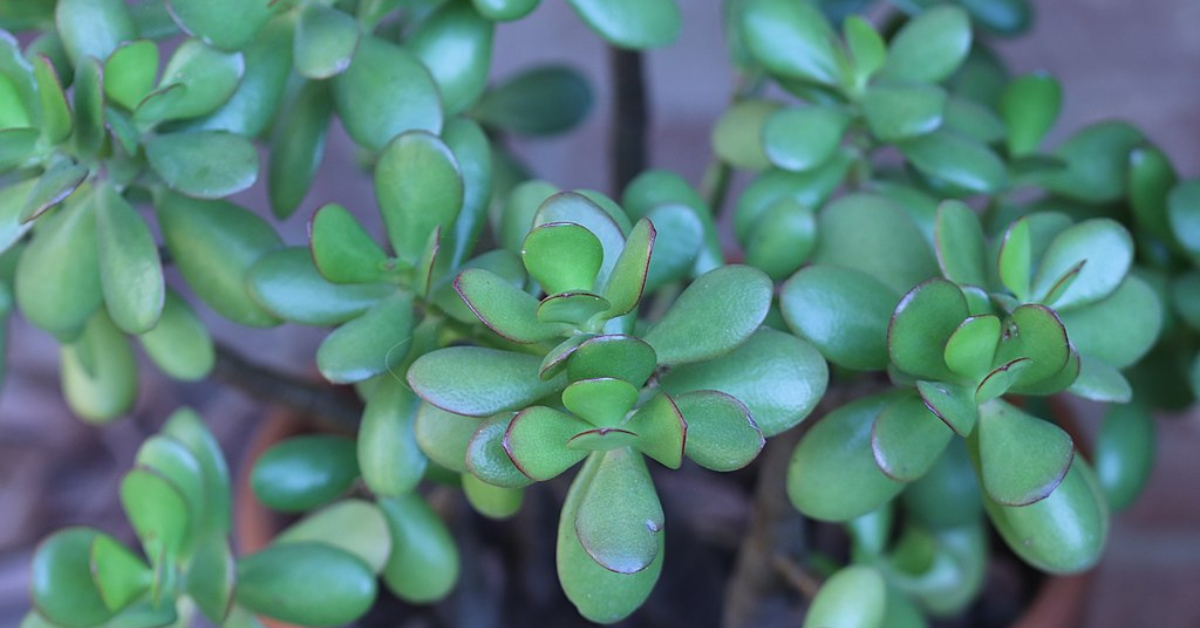IN THIS ARTICLE
The String of Bananas plant, also known as Senecio radicans, is a unique succulent that features elongated, banana-shaped leaves cascading down like a string. This plant adds a touch of whimsy and charm to any indoor or outdoor space, making it a popular choice among plant enthusiasts.
Facing issues like wilting or slow growth? Don’t worry; we’ve got you covered. From choosing the right soil to perfecting your watering routine, our guide will help you revive and help your string of bananas thrive.
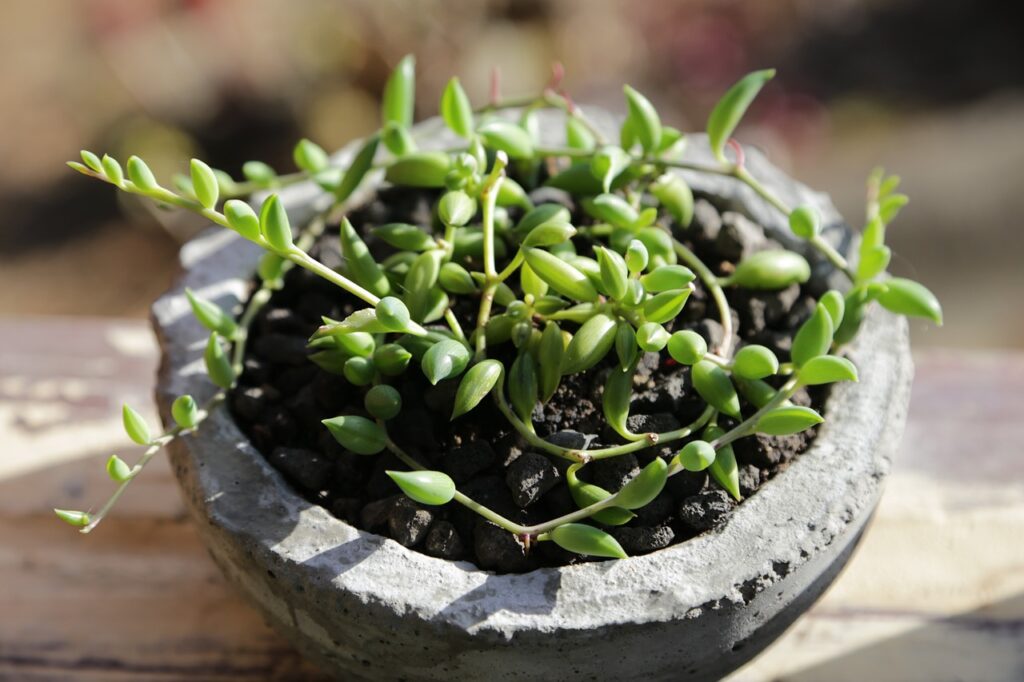
| Botanical Name | Senecio radicans |
| Family | Asteraceae |
| Plant Type | Succulent |
| Mature Size | 3-6 inches tall, trailing up to 36 inches long |
| Sun Exposure | Full sun to partial shade |
| Soil Type | Well-drained, sandy soil |
| Soil pH | Neutral to slightly acidic (6.0-7.0) |
| Bloom Time | Spring to summer |
| Flower Color | White to pale yellow |
| Hardiness Zones | 9-11 (USDA) |
| Native Area | South Africa |
Types of String of Bananas
String of Bananas (Senecio radicans) comes in multiple varieties. Below is a table summarizing different types and their distinct features:
| Type Name | Unique Characteristics |
|---|---|
| Common Variant | Green banana-shaped leaves |
| Variegated Variant | Green and white leaves, providing a unique aesthetic |
| ‘Fish Hooks’ | Slightly curved, hook-like leaves offering a distinctive visual appeal |
How to Grow String of Bananas
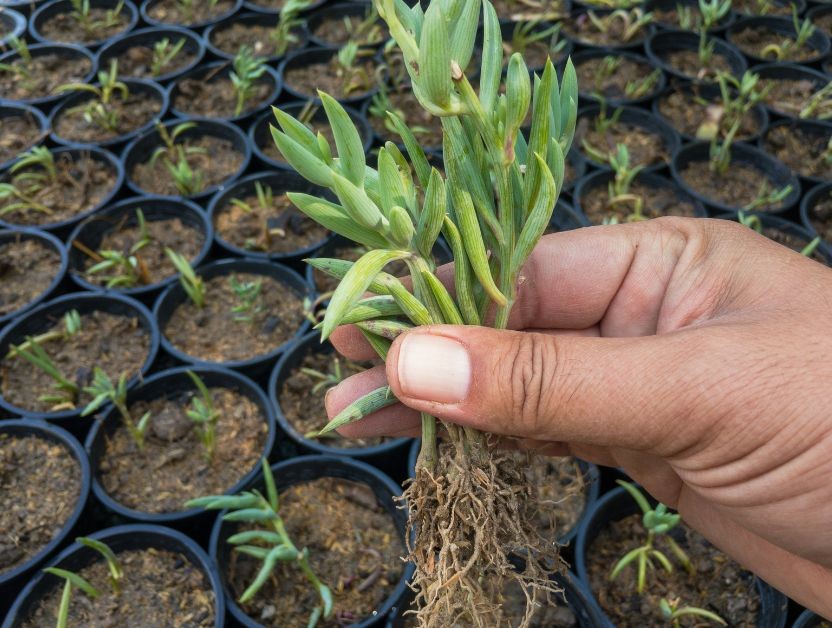
Choosing the Right Location
When selecting a spot for our string of bananas, we need to ensure it receives plenty of bright, indirect light. Direct sunlight can scorch the leaves, while too little light results in leggy growth. A south-facing window with filtered light or partial shade outdoors works perfectly.
Best Pot for String of Bananas
Choosing the right pot is crucial. We should go with a pot that has drainage holes to prevent waterlogging, which can lead to root rot. Hanging pots or shallow containers are ideal since they allow the trailing vines to cascade beautifully. Clay or terracotta pots are excellent as they help with moisture regulation.
Best Soil for String of Bananas
The string of bananas thrives in well-draining soil. A cactus or succulent mix works best, or we can create our own blend by mixing regular potting soil with sand or perlite. This prevents water retention and ensures the roots have the right balance of moisture and air, promoting healthy growth.
Planting Steps
To plant or propagate string of bananas from cuttings, follow these steps:
- Cut a healthy vine, ensuring it’s at least 4-6 inches long.
- Let the cut end dry and callous over for a day or two.
- Place the cutting on top of the soil, gently pressing it down—ensure not to bury it too deep.
- Water sparingly until roots develop, usually within a few weeks.
- Optionally, use a rooting hormone to speed up the process.
How to Grow String of Bananas from Cutting
Growing string of bananas from a cutting involves:
- Cutting a 4-6 inch healthy vine.
- Allowing it to dry and callous.
- Placing it on well-draining soil.
How to Root String of Bananas
To root string of bananas:
- Use a healthy cutting.
- Place it on top of well-draining soil.
- Keep the soil slightly moist but not waterlogged during the rooting period.
How to Care for String of Bananas
| Care Aspect | Guidelines |
|---|---|
| Watering | Water thoroughly but infrequently; let the top inch of soil dry |
| Fertilization | Use balanced, diluted fertilizer during growing season, monthly |
| Pruning | Trim leggy/unhealthy vines; remove dead/damaged leaves |
| Repotting | Repot every 2-3 years; use a slightly larger pot with drainage |
Watering Guidelines: How Often to Water String of Bananas
Watering our string of bananas correctly is crucial. These plants prefer their soil to be on the drier side. We should water them thoroughly but infrequently. A good rule of thumb is to wait until the top inch of soil feels dry before watering again.
Overwatering can lead to root rot, so it’s better to err on the side of underwatering. During colder months, reduce the frequency of watering as the plant’s growth slows down.
Fertilization Tips
Fertilizing our string of bananas can boost its growth. Use a balanced, water-soluble fertilizer diluted to half strength during the growing season, typically spring and summer.
Apply the fertilizer once a month. Avoid fertilizing during the dormant winter months. Over-fertilization can harm the plant, so stick to a balanced feeding schedule.
Pruning: How to Prune String of Bananas
Pruning helps maintain the shape and health of our string of bananas. Trim back any leggy or unhealthy vines using clean, sharp scissors. Pruning encourages new growth and keeps the plant looking full.
It’s also a good opportunity to remove any dead or damaged leaves. Pruning can be done throughout the year, but the best time is during the active growing season.
Repotting: How to Repot String of Bananas
We should consider repotting our string of bananas every 2-3 years or when the plant outgrows its current pot.
- Choose a slightly larger pot with drainage holes.
- Gently remove the plant, shake off the old soil, and examine the roots.
- Trim any that are rotten or excessively long.
- Place the plant in the new pot with fresh, well-draining soil mix, and water sparingly after repotting to allow the plant to settle in its new home.
How to Propagate String of Bananas
Propagating string of bananas is simple. Cut a healthy 4-6 inch vine, let it dry for one day, and place it on well-draining soil. Water sparingly until roots develop in a few weeks. Alternatively, use rooting hormone to accelerate rooting. Ensure proper light and moisture levels for optimal growth.
Common Issues and Solutions
Pests and Diseases
Our string of bananas can fall prey to pests like mealybugs and spider mites. To control these, use insecticidal soap or neem oil. Gently wipe the leaves to remove pests. Depending on the infestation, repeat treatment every week. Fungal issues can arise from overwatering; ensure proper drainage and reduce watering frequency. Yellowing leaves indicate these problems.
Troubleshooting Growth Issues
Slow or leggy growth is a common issue due to insufficient light. Relocate our plant to a brighter spot with indirect light. Limp or shriveled leaves suggest underwatering or poor drainage. Adjust our watering routine to keep the soil slightly moist but not waterlogged. Root rot occurs from overwatering; trim affected roots and repot in fresh, well-draining soil. Regular monitoring ensures optimal health.
| Issue | Cause | Solution |
|---|---|---|
| Mealybugs on bananas | Pests (Mealybugs) | Use insecticidal soap or neem oil, wipe leaves, and repeat weekly |
| Spider mites | Pests (Spider mites) | Use insecticidal soap or neem oil, wipe leaves, and repeat weekly |
| Yellowing leaves | Overwatering | Ensure proper drainage, reduce watering frequency |
| Slow/leggy growth | Insufficient light | Relocate to a brighter spot with indirect light |
| Limp/shriveled leaves | Underwatering/Poor Drainage | Adjust watering to keep soil slightly moist, not waterlogged |
| Root rot | Overwatering | Trim affected roots, repot in fresh, well-draining soil |
Benefits of Growing String of Bananas
| Benefit | Description |
|---|---|
| Low-maintenance | Perfect for busy schedules |
| Enhances air quality | Improves the air you breathe |
| Adds greenery | Brings a touch of nature to indoor spaces |
| Beautiful hanging vines | Ideal for balconies and window sills |
| Easy propagation | Provides an endless supply of new plants |
Conclusion
In summary, mastering the care of our string of bananas ensures vibrant, healthy growth. Whether indoors or outdoors, with the right light, soil, and watering, our plants will thrive.
Don’t forget to explore other succulents like String of Pearls, jade plants, or Burro’s Tail plant for variety and added greenery in our gardens.
Frequently Asked Questions
Your plant may be dying due to overwatering, poor drainage, insufficient light, or pest infestations. Adjust care habits accordingly.
You Might Also Like ✾
Table of Contents Introduction to Cactus: Cacti are the desert plants famous for their ability to survive in dry/arid environments.…
Photo: PEAK99, CC BY 3.0, via Wikimedia Commons It is not hidden that kalanchoe succulent (kalanchoe blossfeldiana) is famous for…
Table of Contents The kalanchoe blossfeldiana is one of the most common succulent in Kalanchoe genus beside others like Kalanchoe pumila, and…
Table of Contents There is nothing better than adding new baby plants to your garden and watching them grow. There…
Table of Contents Succulents are a must-know if you are fond of plants that are easy to maintain. These unique…
Growing a new Aloe Vera plant from broken leaves is one of the easiest methods to propagate Aloe Vera plant. To propagate, you…
